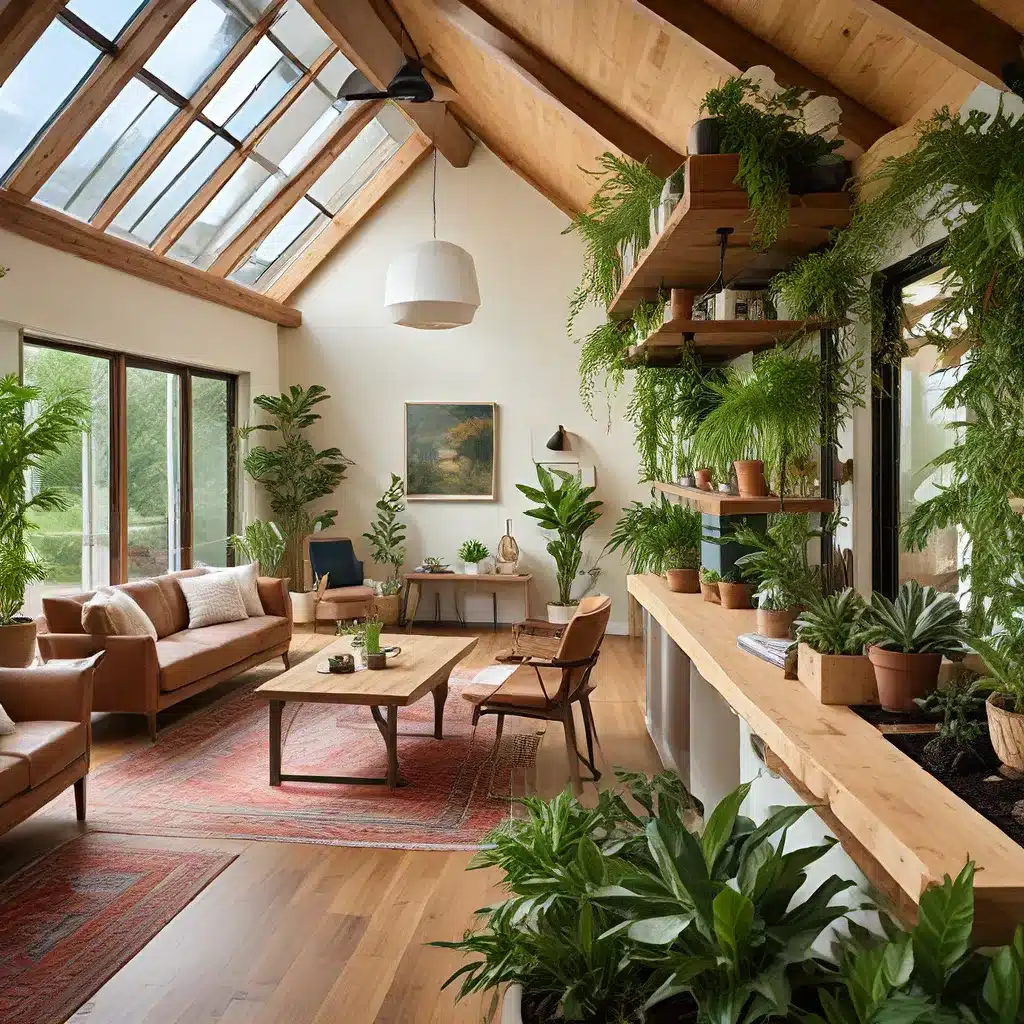
In a world where environmental consciousness has become increasingly crucial, the concept of sustainable design has taken center stage in the realm of interior design and home decor. As more homeowners seek to create spaces that not only reflect their personal style but also align with their values, the demand for eco-friendly and energy-efficient solutions has risen dramatically.
Embracing the Power of Nature
One of the key pillars of sustainable design is the seamless integration of nature into the home. Biophilic design, a concept that emphasizes the innate human connection to the natural world, has become a driving force in the industry. By incorporating natural materials, abundant greenery, and abundant natural light, designers can create spaces that feel rejuvenating and soothing, while also reducing the environmental impact.
Urban Grace Interiors, a leading design firm, has embraced this approach, helping homeowners cultivate verdant oases within their own homes. “We believe that bringing the outdoors in is not only visually stunning but also has tangible benefits for our clients’ well-being,” says Emily, the firm’s principal designer. “Whether it’s a lush indoor garden, a living wall, or strategically placed windows that flood a room with natural light, these elements can have a profound impact on mood and energy levels.”
Sustainable Materials and Finishes
In addition to the integration of nature, the selection of sustainable materials and finishes is crucial for creating an eco-friendly haven. From reclaimed wood and recycled glass to low-VOC paints and bamboo flooring, there are a wealth of options that not only reduce the environmental footprint but also add unique character and texture to a space.
“One of the biggest misconceptions about sustainable design is that it’s limited in style or aesthetics,” explains Emily. “In reality, the range of sustainable materials available today is truly diverse, allowing us to create spaces that are both visually stunning and environmentally responsible.”
Optimizing Energy Efficiency
Alongside the use of sustainable materials, energy-efficient design strategies are essential for creating an eco-friendly home. This can involve the implementation of smart home technology, high-performance insulation, and energy-efficient appliances and lighting.
“We work closely with our clients to understand their energy usage and identify areas where we can make meaningful improvements,” says Emily. “Simple changes, such as upgrading to LED lighting or installing programmable thermostats, can have a significant impact on a home’s carbon footprint and utility bills.”
Wellness-Focused Design
In the pursuit of sustainable design, the well-being of the occupants is also a critical consideration. Biophilic design not only connects homes to nature but also has been shown to have a positive impact on physical and mental health. Additionally, the use of non-toxic materials and the incorporation of air-purifying plants can contribute to a healthier indoor environment.
“We believe that a sustainable home should be a sanctuary – a place where people can thrive, both physically and mentally,” says Emily. “By prioritizing wellness-focused design, we can create spaces that not only look beautiful but also support the overall well-being of our clients.”
Personalized Luxury
While sustainability is a primary focus, luxury and personalization remain essential elements of the design process. “Our clients expect a high level of personalized service and unique design solutions,” explains Emily. “By blending sustainable practices with bespoke touches, we can create luxurious havens that reflect the individual needs and preferences of each homeowner.”
Empowering Homeowners
At the heart of sustainable design is the belief that everyone can make a positive impact on the environment, even within the confines of their own homes. By educating homeowners on the available eco-friendly options and the long-term benefits of sustainable design, designers can empower them to become active participants in the journey towards a more environmentally conscious future.
“Our role as designers is not only to create beautiful spaces but also to inspire and guide our clients towards more sustainable lifestyle choices,” says Emily. “When homeowners understand the far-reaching implications of their design decisions, they become empowered to make a difference, one room at a time.”
Conclusion
As the demand for sustainable living continues to grow, the interior design industry has a unique opportunity to lead the charge in creating eco-friendly havens that nourish both the environment and the human spirit. By embracing the principles of sustainable design, incorporating natural elements, selecting sustainable materials, optimizing energy efficiency, and prioritizing wellness, designers can transform homes into sanctuaries that reflect the homeowners’ values and contribute to a more sustainable future.

